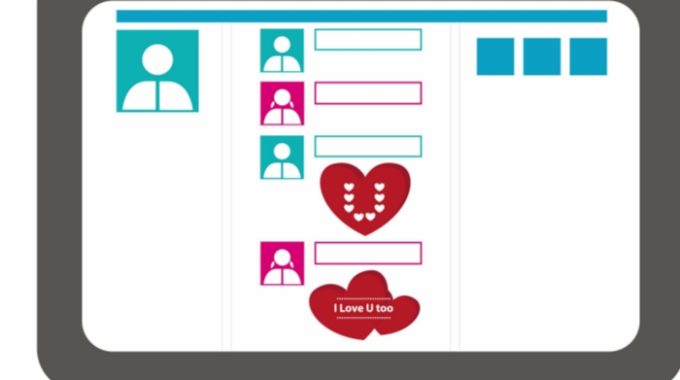
7 Tips For Creating A Sustainable Marketing Budget For Your Small Business
One day you might build up a reputation that precedes you, turning your company into a household name, but you’ll never make it there if you don’t thrive and expand — and you can’t thrive if no one knows about your business. That’s why bringing attention to your name and brand must be one of your core concerns as a small business owner. To make steady strides towards your goals, you need a sustainable marketing budget.
Part of this will involve simply doing an excellent job and impressing your customers, picking up recommendations in the process, but the bulk of it will stem from marketing. The first obstacle there is that good and varied marketing costs money — there’s only so much you can achieve without making a meaningful investment — which is where a sustainable marketing budget can help.
The second obstacle, naturally, is that money is tight at the small business level. Spend too much on your marketing and you’ll struggle to make ends meet for your everyday operations.
How do you create a sustainable marketing budget?
Here are 7 simple tips to help you get started:
#1. Set out realistic long-term goals
Before you can start forming your budget, you need to have a solid idea of what you’re ultimately trying to achieve. It’s surprisingly common for a small business to do one of two things before trying to establish a budget: set out goals that are utterly unrealistic (such as quadrupling the size of a business within six months), or not set out any goals at all.
You need goals, and realistic ones. Otherwise, your budget will be doomed from the outset, because your efforts will either fall short of expectations or have vague consequences. How can you gauge the success of a campaign if you gave it no goals? There’s no use in a campaign being sustainable if you have no compelling reason to continue it.
#2. Choose a modest sum to start
Once you have some goals to pursue, tread lightly when getting your marketing efforts off the ground. I strongly recommend starting with a modest amount of money, even if you’re convinced that you can afford to spend more. This is because you don’t yet know how effective your marketing is going to be, and because ROI should improve over time as you adjust it.
Once you’ve achieved something useful with that limited investment, you can scale up. Treat it as getting through one phase before moving to the next. That way, if your first battery of marketing materials completely flops, you’ll have lost less money in the process, and you can more comfortably return to the drawing board to devise a way forward.
#3. Revise your cash flow calculations
You can survive without profit, you can even endure without income, but you can’t handle the collapse of your cash flow (simply how cash flows in and out of your business) if you have any regular outgoings. You’ll quickly fall into arrears and struggle to get out. As part of your general management, you should already be keeping an eye on your financial stability, but you’ll need to update your calculations to accommodate your marketing.
Whatever system you’re using (whether it’s a basic spreadsheet or an actual accounting tool), update your figures as soon as you’ve committed to your marketing strategy. Don’t make the mistake of assuming that you’ll handle it manually as a separate consideration.
#4. Select significant metrics to monitor
Your budget will inevitably be going towards various distinct tactics, such as content marketing, email marketing, PPC marketing, and so forth — so monitoring the performance will be somewhat complicated. For each tactic, you’ll need to identify the most appropriate performance metrics and use them for ongoing adjustments.
If you skip this step, you may be able to see how close you’re getting to your overall goal, but you’ll find it very hard to make improvements to the efficiency of your budget. If you discover that PPC isn’t winning you any significant leads, for instance, you might want to reduce the budget and put that money towards something else.
#5. Focus on reworkable content
The more ROI your budget achieves, the more sustainable it will be, and reworkable content is outstanding for ROI. What do I mean by reworkable content? Well, content that you can adjust and reuse in different formats and across different platforms. For instance, if you create a business brochure, you can offer it as a printed document, provide it as a downloadable PDF, and tweak the content for a page on your website.
Alternatively, you could create blog posts, and then record the content to make podcasts, then collate and slightly expand upon the posts to create an eBook. Choosing the most economical marketing methods for your budget will keep it returning as much value as possible.
#6. Leave some room for creativity
We’ve already looked at monitoring metrics so you can adjust resource ratios, taking money away from certain tactics and redirecting it to others, but you also need to consider the value of creative flexibility. What I mean by this is that you might occasionally want to do something extra-special, but find that you don’t have the money in the budget.
If you leave some room in your budget, aiming to only hit 80-90% of your set budget every month, then you’ll steadily accrue additional resources that you can bring to bear when you deem it useful. When you feel convinced that your new campaign idea is a winner (and the stats back you up), you’ll have the money set aside to pay for it without going over your budget.
#7. Stay ready to pivot
Some marketing tactics (like email marketing) have been reliably valuable since their inception, but most have fluctuated significantly, and others have only become viable in recent years. Influencer marketing, for instance, only hit mainstream significance when social media reached a certain level of popularity.
Because a tactic might become defunct at any time, you should always be ready to pivot with your marketing budget. If you have a compelling reason to cancel your PPC activity and completely rethink your budget (in a post-GDPR world, you can never know when a PPC platform might be comprehensively revised), you need the flexibility to do it. That means putting your marketing budget down with an understanding that it could change at any time.
Setting up a sustainable marketing budget isn’t particularly difficult, but it can take a while and require a lot of thought. With these 7 tips, you should be able to get your marketing campaign up and running with minimal confusion and inconvenience.
Author Bio:
Rodney Laws is the Editor at Ecommerce Platforms
Read more articles about creating a Sustainable Marketing Budget on the Marketing Eggspert blog.



